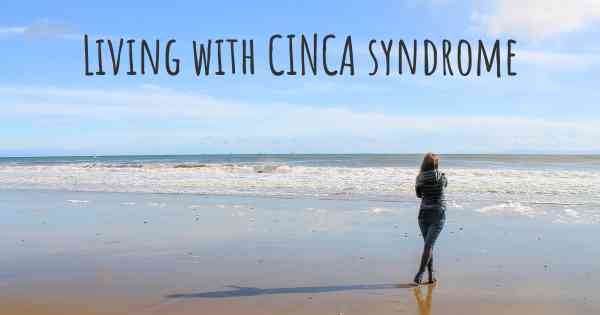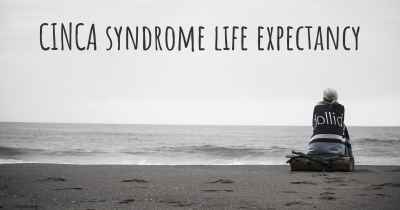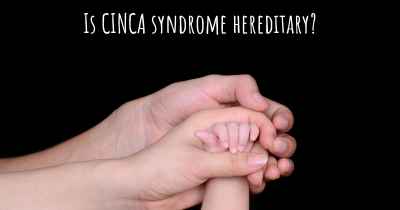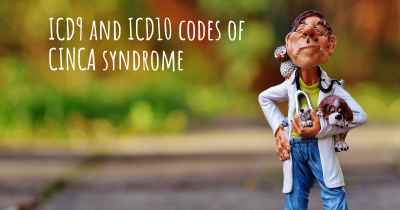Living with CINCA syndrome. How to live with CINCA syndrome?
Can you be happy living with CINCA syndrome? What do you have to do to be happy with CINCA syndrome? Living with CINCA syndrome can be difficult, but you have to fight to try to be happy. Have a look at things that other people have done to be happy with CINCA syndrome

Living with CINCA Syndrome
CINCA syndrome, also known as Chronic Infantile Neurological Cutaneous and Articular syndrome or NOMID (Neonatal-Onset Multisystem Inflammatory Disease), is a rare autoinflammatory disorder that affects various systems in the body. Living with CINCA syndrome can present unique challenges, but with proper management and support, individuals with this condition can lead fulfilling lives.
1. Medical Management:
Effective medical management is crucial for individuals with CINCA syndrome. It is essential to work closely with a team of healthcare professionals, including rheumatologists, immunologists, and other specialists, to develop a comprehensive treatment plan. This plan may involve medications to control inflammation, manage pain, and prevent complications. Regular check-ups and monitoring are necessary to assess disease progression and adjust treatment as needed.
2. Symptom Management:
CINCA syndrome can cause a range of symptoms, including fever, rash, joint pain, and neurological issues. Developing strategies to manage these symptoms can greatly improve quality of life. Applying cold compresses or taking cool baths can help alleviate fever and rash. Physical therapy and gentle exercises may help manage joint pain and maintain mobility. It is important to communicate any changes in symptoms to your healthcare team promptly.
3. Emotional Support:
Living with a chronic condition like CINCA syndrome can be emotionally challenging. Seeking emotional support from friends, family, and support groups can provide a valuable outlet for sharing experiences and coping strategies. Connecting with others who have similar conditions can help reduce feelings of isolation and provide a sense of community. Additionally, counseling or therapy may be beneficial in managing the emotional impact of living with a chronic illness.
4. Education and Advocacy:
Education about CINCA syndrome is essential for both individuals with the condition and their caregivers. Understanding the disease, its symptoms, and available treatments empowers individuals to actively participate in their own care. It is important to stay informed about the latest research and advancements in the field. Becoming an advocate for CINCA syndrome can help raise awareness, promote research, and improve support for the community.
5. Lifestyle Modifications:
Adopting certain lifestyle modifications can contribute to overall well-being for individuals with CINCA syndrome. This may include maintaining a balanced diet, engaging in regular physical activity within the limits of the condition, and getting sufficient rest and sleep. Avoiding triggers that worsen symptoms, such as extreme temperatures or certain foods, can also be helpful. It is important to consult with healthcare professionals before making any significant lifestyle changes.
6. Family and Social Support:
CINCA syndrome not only affects the individual with the condition but also their family and close social circle. Building a strong support network is crucial for everyone involved. Open communication, understanding, and empathy within the family can help navigate the challenges of living with a chronic illness. Educating family members and close friends about CINCA syndrome can foster a supportive environment and encourage their involvement in the individual's care.
7. Regular Follow-ups:
Regular follow-up appointments with healthcare professionals are essential to monitor disease progression, assess treatment effectiveness, and address any concerns. These appointments provide an opportunity to discuss any changes in symptoms, adjust medications, and receive necessary vaccinations. Staying proactive in managing the condition through regular follow-ups can help prevent complications and ensure optimal care.
Conclusion:
Living with CINCA syndrome requires a multidimensional approach that encompasses medical management, symptom control, emotional support, education, lifestyle modifications, and a strong support network. By actively engaging in their own care and seeking appropriate support, individuals with CINCA syndrome can lead fulfilling lives despite the challenges posed by this rare condition.








